By: Bianca Perla
“Is it not possible that a place could have huge affection for those who dwell there? Perhaps your place loves having you there. It misses you when you are away and in its secret way rejoices when you return. Could it be possible that a landscape might have a deep friendship with you? That it could sense your presence and feel the care you extend towards it? Perhaps your favourite place feels proud of you.”
― John O’Donohue
We will never know if our island landscapes and species enjoy our presence and welcome us but there is something connecting and fulfilling in living our lives as if this type of relationship is true and possible. Community science provides one way to live in this connected way with our environment. Community science allows us to come together as a community, bonds us deeply to our island, and invites us to learn what nature needs and how to nurture it. It also fills in the cracks and tackles the hard questions about nature on our islands that professional scientists don’t have the time, funding, or capacity to take on (read these examples of how Community science makes a difference all over the world: https://www.sciencemag.org/news/2017/05/where-have-all-insects-gone, https://urbanecologycenter.org/what-we-do/community-science.html, https://www.nature.com/articles/d41586-018-07106-5 )
When I am out with volunteers on VNC adventures, be it out on the beach, kneeling creekside looking at bugs, stretching our ears to hear a salmon approach, or listening for coyote howls in the darkness, I continually feel my heart swell because I am doing this with members of my own community who are grounded in this place. Together we are learning about our home in the most intimate and detailed ways. This, my heart tells me, is how science should be done, not only in some ivory tower but also in community with one another, out of respect and a sense of wonder for the wildlife that shares our home, and in the spirit of giving back to a place we all love dearly. I can’t express my gratitude enough for the good people who make up our Vashon Nature Center community. Thank you all!
Beach Surveys (partners–King County, Washington Department of Natural Resources, University of Washington, island volunteers):
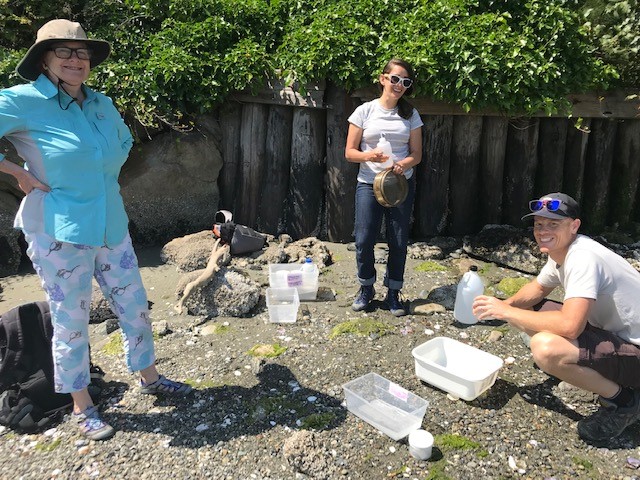
Thank you to all of our BeachNET volunteers who showed up to help us monitor shoreline armoring removal sites around the islands. King County has purchased properties along the shoreline from willing owners and is in the process of restoring these areas to their natural state to improve salmon habitat. VNC BeachNET volunteers are monitoring how this restoration is progressing and whether it is effective. Vashon is hugely important for salmon throughout the Puget Sound. 50% of the natural shoreline left in King County exists on Vashon-Maury and juvenile salmon from as far away as the Stillaguamish river have been found foraging along Vashon’s shores. In the above photo, volunteers catalog terrestrial arthropods that drop from vegetation overhanging the beach. Did you know that up to 70% of a juvenile salmon’s diet can come from insects that fall from shoreline vegetation?
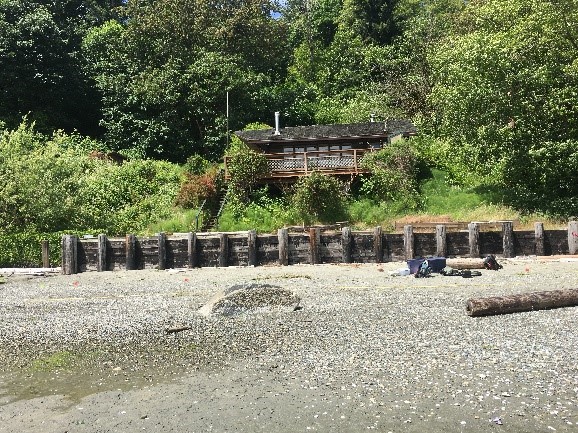
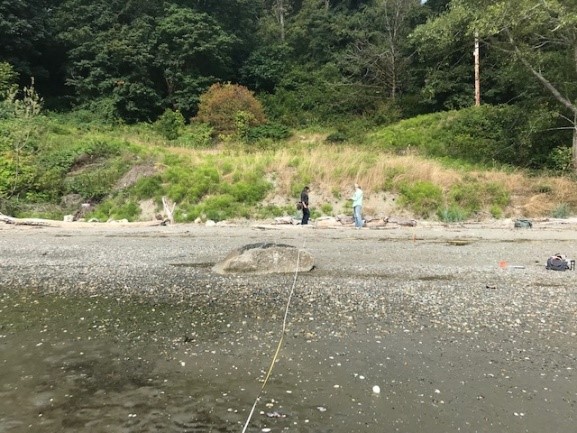
This was our first year of monitoring after bulkheads have been removed at these King County sites and it was really interesting to see the changes (above: Lost Lake site in 2018 and in 2019). This winter we will be going through the data collected and summing up the changes in a more quantitative way and will share these as they become available. But for now, here are a few things we noticed:
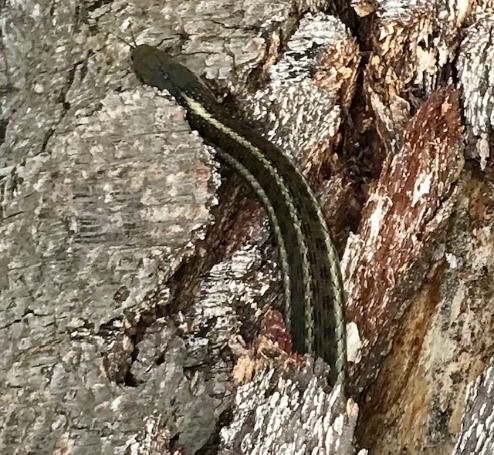
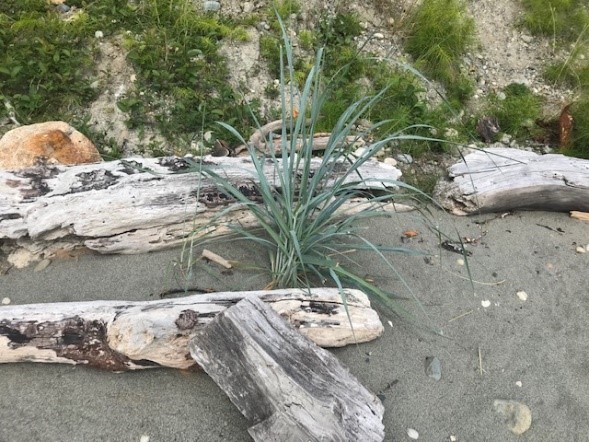
In just one season after bulkheads were removed some changes were obvious. We’ve seen beach logs wash up and anchor on site providing habitat to many terrestrial and beach critters including this garter snake! More sand in the upper reaches of the beach has allowed dune grass to start establishing and beach wrack to accumulate. Dune grass patches stabilize the shoreline from erosion and provide important shoreline habitat for a variety of insects, birds and small mammals and beach wrack contributes nutrient dense food for invertebrates. Analyzing our data from these surveys will give us a more accurate idea of the extent and type of changes occurring on these sites and how they compare to both natural and armored stretches.
Cliff-nesting bird surveys (partners- Vashon-Maury Island Audubon, Whidbey Island Audubon, Washington Department of Natural Resources, Nisqually Nature Center, island volunteers):
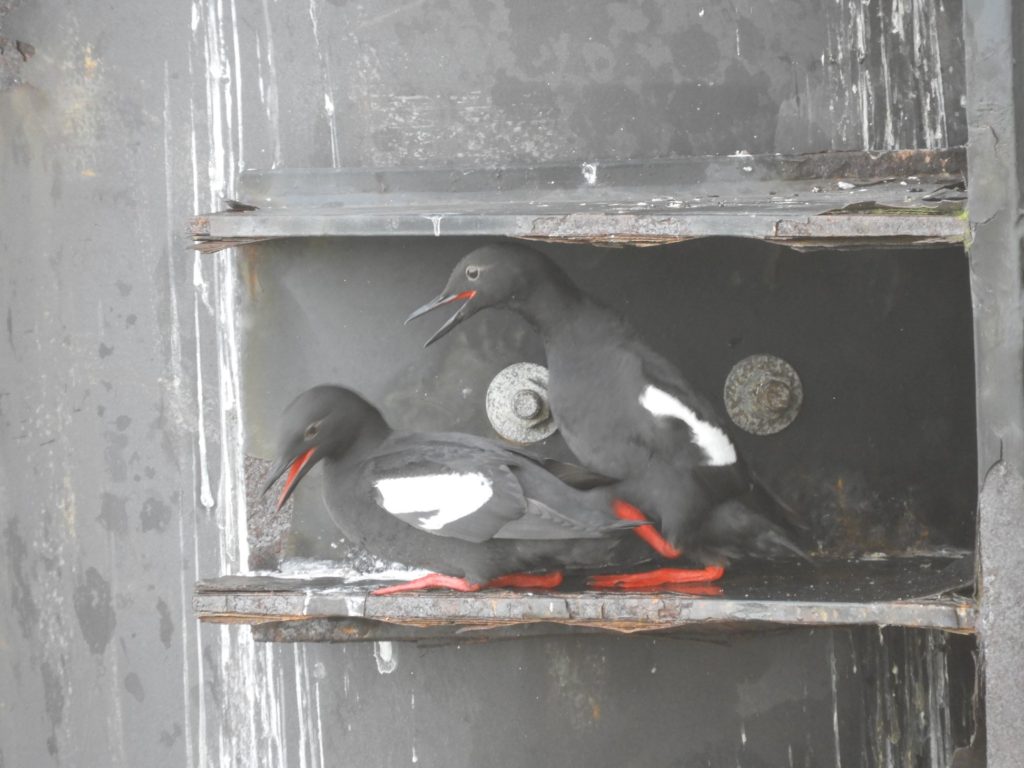
Cliff-nesting bird survey volunteers set a new record! Adria Magrath and Sherry Lee Bottoms worked together at their KVI study site to identify the first official record for nesting Pigeon guillemots on Vashon. Way to go ladies. Read more about this program at the link below. Thanks to Kathryn True, Adria Magrath, and Sherry Lee Bottoms as well as our partners at Vashon-Maury Island Audubon: https://vashonnaturecenter.org/community-science-snapshot-plucky-seabird-is-canary-for-health-of-puget-sound/
Carnivore surveys (University of Washington, CREOi, King County Parks, island volunteers):
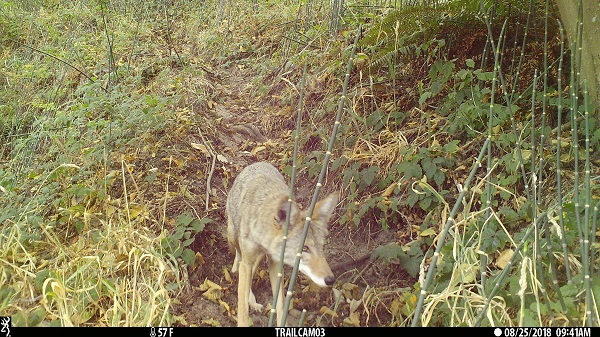
Outreach Coordinator Kathryn True (what would we do without her?) also does a marvelous job summing up our coyote population research, another of our summer projects, in this blog post. Special thanks to science adviser John Rupp, our wildcam volunteers, and our interns Hailey Quackenbush and Grace Riggs for helping us do research this summer! This blog post ran in the Beachcomber as well. Donate to help us with camera supplies and equipment. Or contact: john.rupp@comcast.net to join the network.
Owlcam (Island volunteers and donors):
The wildest batch of owlets we’ve watched so far all successfully fledged (for more statistics and the full story visit our owlcam page). These owlets succeeded in breaking into the barn and out of their nestbox, they had amazing adventures flying to the ground and flying on top of the barn roof and getting back to the nest, and they even let a mouse go unscathed that accidentally fell into their nestbox. This was the most unpredictable group of little owls we’ve experienced, lots of spunk. We wish them well and thank the landowners, camera volunteers, and those who supported this effort with the necessary funds to make it happen. Donate for next year.
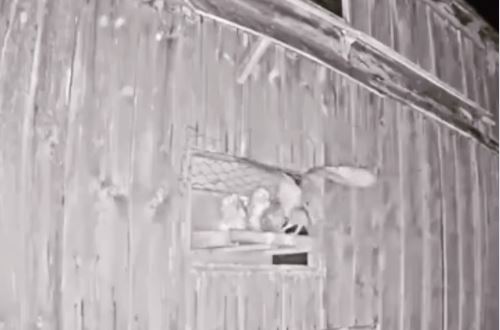
Heron Meadow Field Station (Vashon Center for the Arts, island volunteers, Jamie Hatten, Vashon-Maury Audubon):
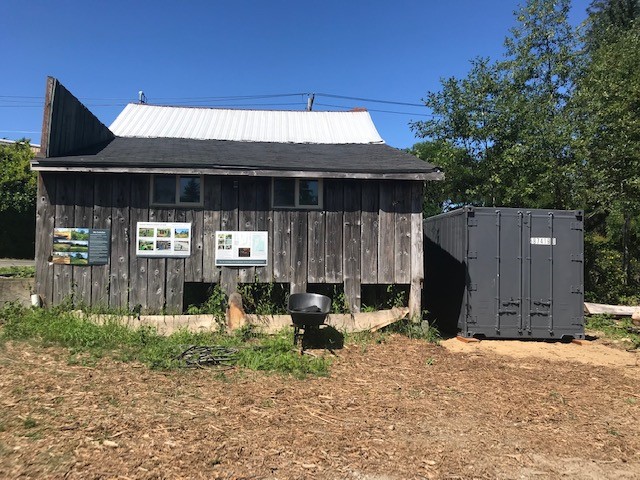
We have moved into our new digs at VCA! Well, at least our scientific field equipment has. Our new science adventure lab (the grey shipping container) holds most of our educational and scientific equipment in a central spot more easily accessible for our school programs and for our many volunteers. Stop by, read our sign boards and enjoy the peaceful meadow. We want Heron meadow to be a community gathering spot where all can enjoy nature. If you see an interesting species or have an experience you want to share when you are visiting the meadow stop by the front desk at VCA and ask for the Heron Meadow field journal to record your observations, experiences, ideas, suggestions! We’d love to hear from you. We will be having some work parties to improve habitat and control invasive species in this wetland-meadow and we plan to host some classes here throughout the year. Stay tuned and join us. It’s fun way to connect with each other and with the land.
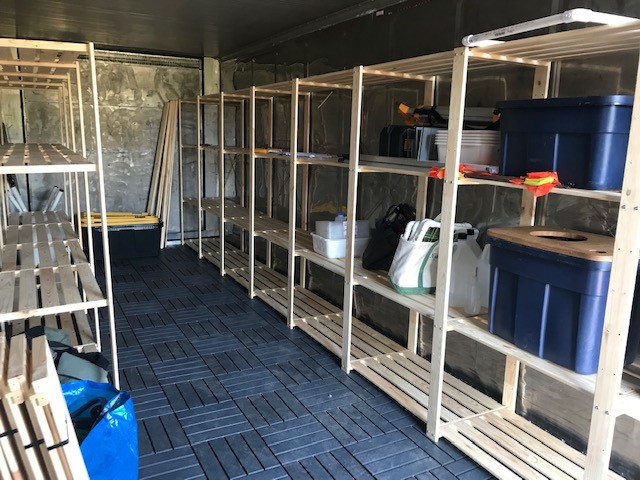
Thanks to generous VNC supporter and outdoorswoman Jamie Hatten for her donation enabling us to purchase, paint, renovate and re-use this shipping container, we are so grateful!
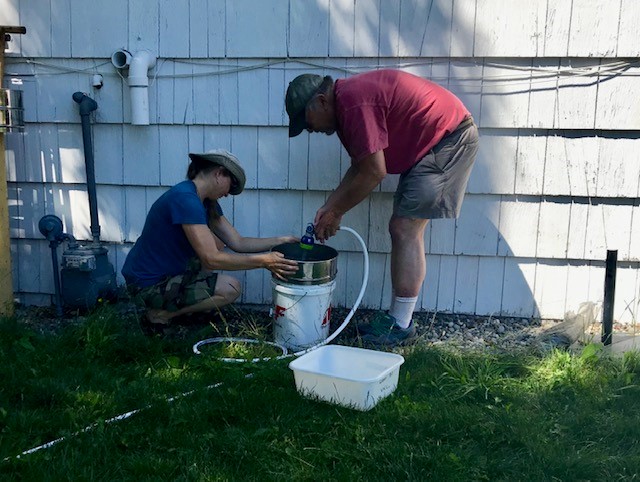
We remain thankful for the on-going support and encouragement from our partners at VCA. We enjoy the collaboration between art and science and the use of indoor and outdoor spaces at VCA for our programs. Here, volunteers process forage fish egg samples at the Blue Heron. The day of this photo we had two children from VCA art programs hang out with us during their lunch break. One was obsessed with squid and octopus and we had a fabulous time indulging his marine biologist tendencies. These moments of connection and serendipity happen naturally at VCA all the time and we love it.
Upcoming Volunteer opportunities:
Stream Bug surveys— August 16th, 17th, Sept. 5th, 6th from 9:30 am-1:30 pm. Help VNC scientists gauge the health of our local creeks by monitoring aquatic macroinvertebrates. No prior experience necessary but must be able to walk on uneven terrain for up to one mile. Please contact Bianca: bianca.vnc@gmail.com to sign up.
Catio Tour, September 21, 10 am- 3pm: VIPP, Vashon-Maury Island Audubon, and Vashon Nature Center are co-sponsoring a Catio tour showcasing 5 different local catios. Learn about this increasingly popular way to keep your cats safe from all sorts of dangers and native songbirds safe from your cats! We are seeking volunteers to table at the catios— Please contact: Jennifer Zeisig, 206-463-6445, catrix2007@aol.com
Salmonwatchers (supported by Keta Legacy Foundation): The salmon watching season begins September 30!! Please contact Kelly Keenan by September 15th if you would like to sign up as a Salmonwatcher this year. Kellykeenan.vnc@gmail.com
SWAG: Stormwater Action Group— we are seeking volunteers who can come out in the field on a moments notice to collect water from creeks during the first big storm this fall. We will then turn this water into a lab to be analyzed for stormwater pollutants. To volunteer to be on call: bianca.vnc@gmail.com
Scientists in Schools: We have some opportunities for expert scientist or naturalist volunteers to help us with our hands-on science programs in all three schools this year. For more info and to sign up: Maria Metler– mariametler.vnc@gmail.com
